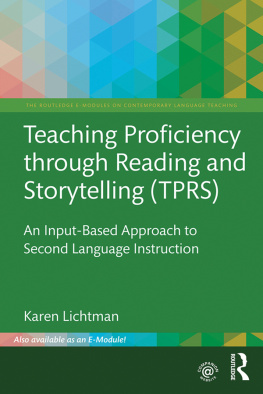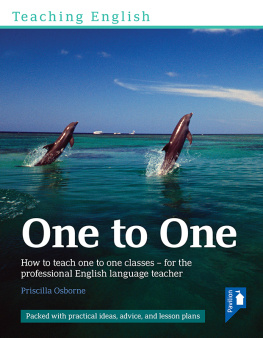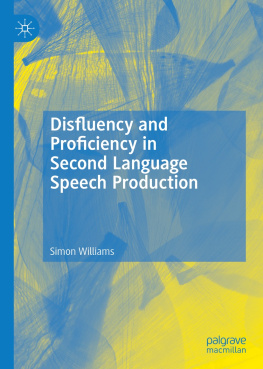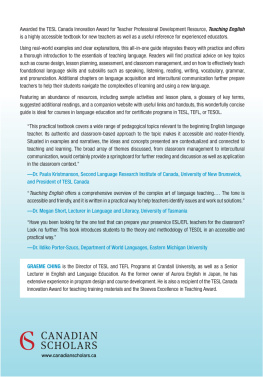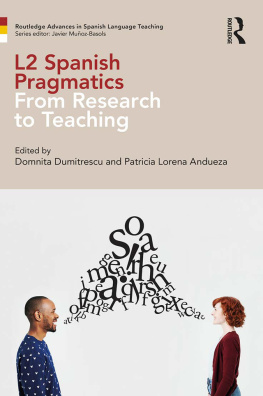First published 2018
by Routledge
711 Third Avenue, New York, NY 10017
and by Routledge
2 Park Square, Milton Park, Abingdon, Oxon, OX14 4RN
Routledge is an imprint of the Taylor & Francis Group, an informa business
2018 Taylor & Francis
The right of Karen Lichtman to be identified as author of this work has been asserted by her in accordance with sections 77 and 78 of the Copyright, Designs and Patents Act 1988.
All rights reserved. No part of this book may be reprinted or reproduced or utilised in any form or by any electronic, mechanical, or other means, now known or hereafter invented, including photocopying and recording, or in any information storage or retrieval system, without permission in writing from the publishers.
Every effort has been made to contact copyright-holders. Please advise the publisher of any errors or omissions, and these will be corrected in subsequent editions.
Trademark notice : Product or corporate names may be trademarks or registered trademarks, and are used only for identification and explanation without intent to infringe.
Library of Congress Cataloging-in-Publication Data
A catalog record for this book has been requested
ISBN: 978-1-138-63281-3 (pbk)
ISBN: 978-1-315-20802-2 (ebk)
Typeset in Sabon
by Apex CoVantage, LLC
Visit the companion website to preview and purchase other modules in this series: http://routledgetextbooks.com/textbooks/9781315679594/

The Routledge E-Modules on Contemporary Language Teaching
Series Editors: Bill VanPatten, Michigan State University, USA, and Gregory D. Keating, San Diego State University, USA
The Routledge E-Modules on Contemporary Language Teaching series is an exciting and innovative approach to topics for the novice or in-training teacher of languages. Written in an easily accessible style and delivered in e-format and paperback versions, specialists and experts provide the latest thinking on a variety of issues that form the foundation of language-teacher knowledge and practice: the nature of language and communication, second language acquisition, interactive tasks, assessment, focus on form, vocabulary development, and technology in language teaching, among many others. Each module serves as a self-contained unit to be used on its own or as part of an introductory course on language teaching. Instructors may mix and match modules to create their own readings for a course on language teaching. The modules may serve as primary reading or as supplemental reading, with each module offering points of reflection, discussion questions, self-quizzes, and a reading list for those who wish to delve further into the topic.
Technology in Language Learning
An Overview
Bryan Smith
Teaching Second Language Writing
Charlene Polio
Content-Based Language Teaching
Roy Lyster
Teaching Proficiency Through Reading and Storytelling (TPRS)
An Input-Based Approach to Second Language Instruction
Karen Lichtman
For more information about this series, please visit: www.routledge.com/The-Routledge-E-Modules-on-Contemporary-Language-Teaching/book-series/REMCLT
Teaching Proficiency Through Reading and Storytelling (TPRS)
This module introduces Teaching Proficiency through Reading and Storytelling (TPRS), an input-based language teaching method. TPRS provides a framework for teaching classes completely in the target languageeven those at the beginner level. Through the steps of establishing meaning, creating a story that is acted out live in class, and reading, students understand and use the target language to communicate right away. Research shows that over time TPRS creates fluent speakers who excel both on traditional tests andmore importantlyin real-life situations. This is a valuable resource on TPRS for world language teachers, language teacher educators, and second language researchers.
Karen Lichtman is Assistant Professor of Spanish Linguistics and Director of Teacher Licensure in the Department of Foreign Languages and Literatures at Northern Illinois University, USA.
Karen Lichtman
Overview
In this module, you will explore the following topics:
Where does a babys first word come from? Parents joyfully record that first dada or no or uh-oh in a baby bookbut, for the baby, the celebrated first utterance is a product of a year or more of listening to language. Before babies begin to speak, they understand plenty of words and can follow commands such as no, touch your nose, or look at the kitty. Childrens receptive vocabulary (words they understand) is larger than their productive vocabulary (words they can say)and this tends to last throughout life. Children learn language by pairing new words they hear with meaning, which is made clear from the contextthe objects and actions in the real world that other speakers refer to. A statement like Look! A horse! is accompanied by clues to meaning: the presence of a real horse (or at least a horse in a picture book,) pointing, and other speakers directing their attention towards the horse. All this provides children with the meaning of the new word horse.
Speech from parents or caregivers to children, including giving commands and naming objects in the environment, is a great example of input. Input is language that learners see or hear in a communicative (meaning-bearing) context. When a two-year old hears, Dont touch that, honey. Its hot, that stretch of speech is input to the child because it is couched within the context of an adult telling the child what to do. When a Spanish student hears, Abran los libros en la pgina 32 (Open your books to page 32), that stretch of speech is input to the learner because it is couched within the context of an instructor giving directions to the class. Input is indispensable in language acquisition, both first and second. Just as we must take in food in order to grow, we must take in input in order for language to grow in our heads (see, for example, the discussion in Gregory Keatings module titled Second Language Acquisition: The Basics in this series).
Learners must first take in input (hear new words and link them to their meaning during comprehension, process sentence structure, link grammatical forms to their meaning and functions) in order to be able to produce output (e.g., express meaning). This applies whether we are talking about a first language, or a second language. Children hear a new word such as horse a number of times in the context of seeing a horse, and Spanish learners hear the word adis many times in the context of saying goodbye. Eventually, the child will be able to say the word horse to refer to a horse, and the Spanish learner will be able to say adis when someone is leaving.
Of course, young childrenunlike older children and adultshave thousands of hours of uninterrupted time to spend learning language. A child who hears a new language for eight hours per day at school will reach a hundred hours of language exposure in less than two weeks. In contrast, a high school student who gets three hours of language class per week will only hear the language for a little more than a hundred hours per year . Even if they are fortunate enough to learn in an immersion setting, older children and adults may contend with obstacles such as friends and family who want to speak to them in their native language, work, family obligations, TV, social media, and so on. The pull to use the first language is great. Given that second language learners cannot devote twenty-four hours a day, seven days a week to learning their new language, it is important that they get as much comprehensible input as possible in the very brief time they have available.

